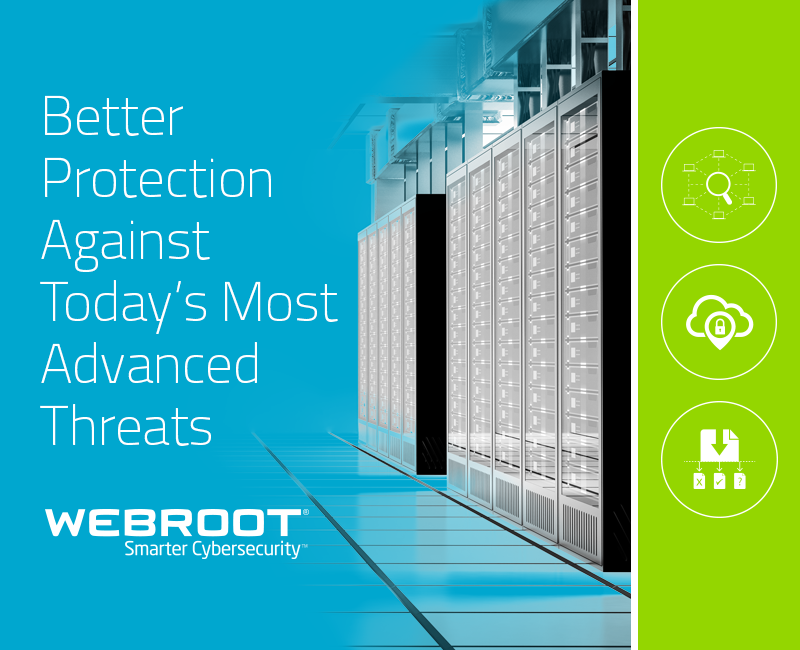
by Connor Madsen | Feb 24, 2017 | Industry Intel
Emergency Services Lines DDoS’d in Texas
Officials have sentenced a cybercriminal who manipulated a bug via the Twitter app to continuously dial 911, which spread to several hundred individuals across multiple states. By tweeting out a malicious link to his followers, anyone who clicked on it was subjected to an endless loop of dialing the local emergency services lines, until the phone carriers were able to shut down the calls.
Magento Database Flaw Exposes User Data
A flaw was discovered that can trigger code to be executed in an online shop’s database that intercepts a customer’s credit card information and resends it to the attacker’s server. This is likely the first time such an attack has been written in SQL and in addition, the code trigger responds to every new customer order by reinserting itself into the site’s source code, if it’s unable to detect the malware in any portion of the page.
IDF Phones Flooded With Malware
Researchers identified a significant number of IDF-related phones were infected with a piece of malware known as ViperRAT, which is capable of extracting and sending any sensitive data on the device. The most common method of infection stems from malicious messaging apps that request administrative permissions for the device, to then gather data and send it to a C&C server.
East Idaho Counties Victims of Ransomware
Two Idaho counties were targets of cyberattacks that left one county still struggling to regain its main systems. Teton County was fortunate to have only their main website defaced, which was promptly restored to normal. Meanwhile, Bingham County was less fortunate to have found ransomware on several computers that then infected their backup servers, bringing all current operations to a halt. The attack was likely initiated from a malicious email attachment that launched an executable file.
Zerocoin Source Code Typo Leads to Breach
Zerocoin made it known that they suffered a breach that allowed an attacker to steal over $500,000 worth of the cryptocurrency. The vulnerability was simply one additional character that caused a bug that, when exploited, allowed the attacker to make one transaction but receive the money repeatedly. The attacker apparently created multiple accounts to hide the influx of the multiple transactions, and had cashed out the majority of the stolen coins by the time the Zerocoin team noticed the variations.

by LeVar Battle | Feb 22, 2017 | Industry Intel
Chatting with David Dufour, senior director of engineering, Webroot, is always interesting. Quite frankly, so is pinning him down for a short Q+A about his experience at RSA 2017. One thing I could be sure of, though, was David having an opinion and being a straight shooter. As a first time attendee, I was curious to know what trends a veteran like David noticed and what were some highlights for him.
Webroot: You’ve been attending RSA for a number of years now. What were your expectations going into RSA 2017?
David Dufour: In my experience, RSA would never be confused with a pure play security conference like Black Hat simply because of all the hype and marketing spin, and this year did not disappoint. Going into the conference, it was apparent that Artificial Intelligence was going to be the big buzzword, with all exhibitors talking about how advanced their AI implementations were. The fun always starts when you pin many of these vendors down on exactly what AI means in their environment- how they’ve implemented it and what struggles they’ve had going to market with AI based solutions. This typically results in a glazed stares that leads to an eye twitch indicating they are finding a way to get rid of me.
“There continues to be significant advances in technology that help prevent malware both at the endpoint and in the network.”
What did you experience on the show floor?
Webroot had a prominent spot in the South Hall this year where the atmosphere seems more cutting edge than the North hall that usually hosts traditional security providers. I prefer to cut through the buzzwords and noise to get to the significant trends in the industry. Malware prevention, detection and remediation continues to be the least sexy, yet most critical tool in a security team’s bag. Although many companies purport its demise, there continues to be significant advances in technology that help prevent malware both at the endpoint and in the network. Many organizations still seem to be struggling with automation, knowing that they need to strike a more automated posture, but not yet comfortable allowing automation to run independent of human review.
What was the best part of RSA 2017?
For me, the best part of any event is typically the meetings I’m able to have with new vendors who can dive deep into the theories and implementations behind their solutions. I had several great meetings, both scheduled and impromptu, that showed promise in terms of new ideas for isolating and preventing threats. I’m hopeful some of these new companies will partner with Webroot in the near future to deliver some truly innovative ways of protecting our customers.

by Connor Madsen | Feb 17, 2017 | Industry Intel
Outerwear Online Retailer Hit with Cyber Attack
Columbia Sportswear announced that they were in the midst of investigating a cyberattack on one of its subsidiary retail sites, prAna, a brand that was acquired by Columbia in 2014. While officials still haven’t confirmed the type of attack, they have stated that it shouldn’t affect any of Columbia’s other affiliated sites.
University Targeted by Fishy Hack
An American university’s computer network was slowed to a crawl by nearly 5,000 infected devices from around the campus, all repeatedly performing searches for seafood. The IT staff noticed the dramatic increase in network traffic caused by the attack, though were initially unable to remedy the situation due to the sheer number of IoT devices sending the commands.
Mandatory Data Breach Reporting Implemented in Australia
In the past several years, thousands of companies and organizations have been victims of some form of data breach, though the number actually being reported is significantly less. While some companies choose to hide the breach from the public for fear of financial loss, this now will change in Australia as they have finally passed legislation for mandatory reporting to the Privacy Commissioner and any affected customers. This reporting must come immediately after a breach has been confirmed and could lead to hefty fines if they go unreported.
Politicians Quick to Adopt New Messaging App
A large number of politicians have been turning to an end-to-end encrypting message app that automatically deletes the conversation after a pre-determined amount of time. Similar to SnapChat, where the picture only lasts for a few seconds, the message app Confide only allows the reading of the message as a finger or cursor passes over the writing. This step dissuades any attempts to save the message’s contents, thereby keeping them from unauthorized eyes.
Ransomware Attack on Water Supply
A security researcher from Georgia created an experiment to simulate a ransomware attack on a water supply system. By using programmable logic controllers that are used in real systems, he was able to show how easily they were to exploit. Many were poorly-secured and even fully accessible online. By using one of these vulnerabilities, an attacker could easily disable several critical systems and damage the actual infrastructure.

by LeVar Battle | Feb 16, 2017 | Industry Intel
Successful companies stand on the shoulders of great customer service. At Webroot, we aim to consistently be the best, and to do so, we rely heavily on our highly skilled, globally-based technical support team to delight our customers at every turn.
At Webroot, we utilize a follow-the-sun approach with customer service support staff in Australia, the United Kingdom, and North America. – Amy Wiley, vice president of engineering service
Because of this, we were honored to win the 2017 SC Award for Best Customer Service at this week’s RSA Conference 2017 during the SC Awards Dinner and Presentation in San Francisco. The SC Awards acknowledge the achievements of companies and information security professionals that focus on protecting businesses and customer data.
The Webroot Family
We support an active and collaborative online community where customers can get involved in discussions about our products, ask IT security concerns, and even submit feature requests. Although our product is cloud-based and customers do not typically require on-site assistance, we do accommodate our customers at no additional cost when needed. Providing exceptional customer service solutions is in Webroot’s DNA and crucial to protecting our customers against the many threats launched by today’s savvy cybercriminals.
Thank you to SC Magazine the honor, and thank you to our customers for being a part of the Webroot family.

by Thomas Caldwell | Feb 15, 2017 | Industry Intel
The City of San Diego is the 8th largest city in the US and has over 12,000 employees, numerous vendor partnerships, as well as a vast array of diverse systems and devices to protect.
In addition to more traditional endpoints and data centers, the City must protect each new piece of smart technology it implements. These include smart street lighting where adaptive controllers and LEDs work to reduce energy consumption based on foot and street traffic analysis; smart parking, in which networked sensors ease congestion with driver communications and dynamic pricing; smart grid, where data collected from smart meters and phasor measurement units increase grid reliability; smart water utilities for fresh and wastewater management; the list goes on.
You can imagine, then, that the network would be a significant asset—both due to cost and the fact that it’s the connective tissue between all business processes, city services, critical infrastructure, and various devices. Because of the diverse and widespread nature of City devices, the network that connects them is constantly exposed to attacks from all entry points of the perimeter, VPN, WiFi, and from internal people using infected devices.
Some Attacks Are Too Sophisticated For Legacy Security Tools
While legacy security tools can catch up to 95% of the attacks from known threat vectors, the most sophisticated attackers use new forms of polymorphic malware and take advantage of the new attack vectors presented as more devices are added to the network. The remaining 5% of attacks that are too dynamic to be detected by legacy solutions now comprise a serious security gap.
FlowScape Analytics technology allows us to determine risk of system-wide user behavior and flag anomalies for remediation. – Gary Hayslip, CISO, City of San Diego
To address the 5%, the City of San Diego has adopted Webroot FlowScape® Network Behavioral Analytics. FlowScape Analytics accelerates network threat detection by automating network monitoring and leveraging supervised and unsupervised machine learning algorithms to protect the City’s core asset: its network. The software can find both known and unknown threat activity by first studying normal network traffic to establish a baseline, next identifying any unusual behaviors and then using advanced heuristics to do a risk assessment.
Here’s How FlowScape® Analytics Enhances Smart City Networks
What makes FlowScape Analytics special is the additional insight it provides. Most network protection solutions only look at direct traffic between endpoint devices and the internet, i.e. North/South traffic. But what about communications between internal devices within the network (East/West traffic)? FlowScape Threat Detection is tightly integrated with the Webroot BrightCloud® Threat Intelligence Platform to connect the dots between North/South communication and East/West communication. It monitors, maps, and learns both IT and IoT/SCADA/PLC communications. It also detects insider staff and vendor behaviors, which greatly increase risk through policy violations. FlowScape Analytics keeps a real-time asset inventory of anything that talks on the network, and the ports they normally communicate over. The end value is the added visibility across the entire threat landscape of a smart city network.
With a daily count of approximately 500,000 cyberattacks against the city of San Diego networks, Webroot FlowScape Analytics gives us the network visibility we need to protect critical infrastructure and services. – Gary Hayslip, CISO, City of San Diego

San Diego Improves Critical Infrastructure with FlowScape® Analytics
Since staff is limited, automating security tools has been a critical requirement for the City. Think of FlowScape Analytics like putting a security analyst in Ripley’s power loader from Aliens. Security analysts don’t have the time or resources to deal with the constant barrage of alerts, so the security framework needs to be able to do some serious heavy lifting on massive amounts of data to determine which network activity is threat related. By implementing FlowScape Analytics to protect their infrastructure, that’s exactly what the City of San Diego has done.
For more information about FlowScape Analytics, download our datasheet.

by Ken Jacobi | Feb 14, 2017 | Business + Partners, Threat Intelligence
We’re not telling you anything new when we say that malware continues to pose a major challenge for businesses of all sizes. Polymorphism, in particular, is especially dangerous. Polymorphic executables constantly mutate without changing their original algorithm, meaning the code can change itself each time it replicates, even though its function never changes at all. That’s why it’s so problematic; organizations that rely on traditional endpoint protection methods have little hope of detecting and blocking all the variants that might hit their network, even if they combine their antivirus technologies with network sandboxing.
How BrightCloud® Streaming Malware Detection Works
With all this in mind, we’ve developed Webroot BrightCloud Streaming Malware Detection. This brand new, innovative technology detects malicious files in transit, in real time, at the network perimeter. It can be integrated into perimeter network security devices to complement existing functionality by identifying and eliminating malicious files before they enter the network or have the chance to spread or mutate internally.
In most cases, Streaming Malware Detection can make determinations without requiring the entire file to be downloaded. It scans files in real time to make determinations after only a small portion of the file has streamed through a network perimeter device. Streaming Malware Detection determines quickly whether files are benign or malicious, enabling the device itself to block, drop, or route the file for further investigation, depending on how the technology partner or end customer chooses has configured the appliance.
For partners, Streaming Malware Detection…
- Adds malware detection functionality to your network device and enhances your ability to detect and block known and never-before-seen malware
- Makes determinations on a high percentage of previously unknown, zero-day, and malicious files at the network level
- Processes files at a rate of 5,700 files/min (over 500 times faster than a typical sandbox at 11 files/min)
- Continuously improves its own capabilities via self-learning
- Provides the flexibility to tune and adjust thresholds to minimize false positive rate
- Integrates quickly and efficiently in network edge security devices via precompiled SDK
- Provides an incremental revenue opportunity
How To Get Streaming Malware Detection
We’re currently planning to make this extra layer of protection against polymorphic malware, and targeted malware in general, available for GA in the second calendar quarter of 2017. For the time being, we’re pleased to invite existing and prospective Webroot technology partners to join our beta program. Contact your Webroot account representative to participate.
For more info about Streaming Malware Detection and other new Webroot services, read our press release.

by Connor Madsen | Feb 10, 2017 | Industry Intel
Macros Turn Focus Towards MacOS
Researchers have discovered a trend of malicious Microsoft Word documents for MacOS that behave similar to Windows macro infections. The culprits download and execute a malicious payload to a user’s computer. While not particularly sophisticated, the macro-based infections focus on exploiting the users of the computer, rather than a software vulnerability, as macros can also be used for legitimate applications.
Phishing and Tax Season Go Hand in Hand
It’s tax season and criminals are working on new and clever ways to gain access to sensitive documents, and other available assets. This year brings the usual spear phishing campaigns that spoof an executive requesting tax forms, but arrive with a follow-up email requesting a wire transfer to a listed account. The best defense against these types of attacks is caution on the recipient of any suspicious emails, and using two-factor authentication where available.
Android Malware Triada Takes Top Spot
The reigning Android malware family has changed from Hummingbad, a rootkit downloader that remains persistent on devices and downloads fraudulent apps for ad revenue, to Triada, a malicious backdoor that grants super-user privileges to the malicious payloads that are downloaded according to a recent announcement. This switch comes after nearly a year as the most widespread infection for Android devices.
Teen Hacks 150,000 IoT Devices Overnight
It’s been revealed that a teenager from the UK, in the span of an evening, successfully hacked over 150,000 printers across the world. He created a simple program that sent printer protocol requests to various IoT devices and was able to get responses from and send jobs to different printers. The teen claims he did so to bring attention to the major lack in security for IoT devices that are connected to an insecure network.
Unpatched WordPress Sites Defaced
Thousands of WordPress sites have been defaced by hackers exploiting a bug patched nearly two weeks ago. Sites that haven’t been updated to the latest version were susceptible to a vulnerability in the REST API allowing unauthorized changes to be made to the title and any visible content. Due to the defacements, Google has begun categorizing affected sites by the hacker group’s names.

by George Anderson | Feb 8, 2017 | Business + Partners
Throughout 2016, many of the attacks and risks in the world of cybercrime followed “analog” crime: holding something for ransom/extortion, propaganda, theft, and identity scams. You might expect a cybersecurity vendor to see these trends as good for business, but in fact it’s the opposite. The modern world relies heavily on the internet and web applications for all types of transactions. For these technologies to continue advancing, users have to feel safe when they conduct those transactions online. That means those of us in the cybersecurity field are dealing with trust as our most valuable commodity. Erode the trust too deeply and many internet users will either take their business elsewhere, or try to avoid online transactions altogether.
Maintaining customers’ trust should always be the core of any cybersecurity provider’s strategy. In 2017, we plan to continue coming up with new ways to use our threat intelligence and cloud-based security platform to do just that. Here’s a look at what’s in store.
Webroot SecureAnywhere® DNS Protection
To kick off the year, we’ve introduced our new Webroot SecureAnywhere® DNS Protection service. By redirecting users’ internet traffic through the Webroot DNS cloud, businesses now get enhanced visibility, control, and peace of mind. Web requests are checked in real time to ensure they are not malware connecting to a Command and Control server, or requests to visit high risk sites. SecureAnywhere DNS Protection also lets businesses fine-tune web access policies by IP address or IP range, and limit access to websites based on their category—with 82 URL categories to choose from. This simple, domain layer security improves productivity, provides great visibility, and is a smart and cost-effective way to dramatically reduce web risks.
Webroot FlowScape®
The second new offering is a state-of-the-art approach to early threat detection that works by analyzing all the traffic taking place within your network; not just communications to and from the internet, but also those that occur between network-connected devices. Using supervised and unsupervised machine learning and behavioral analytics, the Webroot FlowScape® solution cuts through everyday network noise to reveal network anomalies and threats that other security technologies miss, and does so early enough for security administrators to prevent those threats from compromising the network. The FlowScape solution is designed for MSSPs and other IT security professionals who need to identify all the adversarial anomalies and risks within their networks.
Webroot BrightCloud® Streaming Malware Detection
Last, but not least, we are releasing Webroot BrightCloud® Streaming Malware Detection for polymorphic malware protection. This technology detects malicious files as they stream through the network perimeter in real time, without having to download the entire file, and without causing undue network latency. Streaming Malware Detection is designed to be integrated into network security devices to help identify and eliminate malicious files before they enter the network.
2017 will bring many new security challenges, but with these new solutions in place and other innovations on the Webroot drawing board, we plan to keep building our customers’ safety, security and trust.

by Blog Staff | Feb 6, 2017 | Industry Intel, Threat Lab
The benefits of adopting the managed service provider (MSP) business model are compelling. After all, predictable, recurring revenue; deeper engagement with clients; and a trusted advisor relationship that generates further business opportunities all sound like everything a successful services business could want. However, for some, it still means braving uncharted territory.
Important Considerations
IT solutions providers interested in switching to the MSP model face a number of decisions. Before you do anything else, you have to define your service offerings. There are so many companies who offer products in the primary MSP categories, so it’s important to take your time in performing a detailed analysis of the pros and cons of various products.
- Automation
Plain and simple, you need automation tools. These include professional services automation (PSA) and remote monitoring and management (RMM) software, which are the backbone of every MSP’s business. Pay close attention not to just features, but the pricing structure and integrations with the other tools you plan to use. - Timing
Another challenge can be finding the right timing to migrate existing customers. The process of transitioning current customers can be a minefield of logistical issues, particularly if those customers purchased different products on a staggered schedule. In those cases, you must consider not just what your full managed services offering will look like, but how to get existing customers onto a monthly bundle.
Differentiating Your Business
Remote monitoring is a standard part of the traditional MSP portfolio. Disaster recovery, such as a secure backup system, is also a leading service to pitch to customers, since disasters of all types can hit an organization at any time, and have the potential to cripple their business operations. So what’s going to make you stand out? You might not think so, but many MSPs are leading with another equally important service: endpoint security.
Computers, mobile devices, and servers will always need protection, but modern businesses face a variety of new challenges. Cybercriminals have only increased their efforts at causing mischief, launching new and creative ransomware with startling frequency at companies around the globe. Additionally, many organizations in the healthcare, financial, and retail segments have compliance mandates for handling sensitive data, which typically include endpoint security. In short, the time is right for starting a conversation about security.
Selecting Cybersecurity
The MSP model is about efficiency gains, so choose a provider that helps reduce your TCO. Look for a security offering that doesn’t need a local server, offers flexible monthly billing, and consider a solution that’s cloud-based so it won’t impact system performance. The security application you choose should be effective, lightweight, and have no noticeable impact when running.
Should disaster strike, it’s also very important to have a solution that can remediate systems automatically, reducing the burden on your IT staff. On the topic reducing burdens, the solution should also include PSA or RMM integration, or a management console that can automate routine tasks and give you the granular visibility you need to oversee all your customers in one place.
Making the Switch to the MSP Model
While adding managed services might seem daunting, it’s a powerful way for resellers to add new revenue streams to the business while transitioning into a hybrid or full MSP model. Keeping costs down on monthly contracts gives MSPs a big advantage today, and if the managed services model didn’t work for both customers and IT solution providers, it wouldn’t have seen the adoption and success it has experienced in recent years. Although the transition isn’t easy, it holds a lot of promise. IT solution providers in transition can rest assured that their best and most profitable years are ahead.
Read this case study to find out how SLPowers, an MSP managing 76 different companies with over 2,000 endpoints, got its start in the reseller realm, moved to managed services, and leveraged next-generation endpoint protection to improve customer satisfaction, lower costs, and increase profitability
Or, take a free, no-risk, no-conflict 30-day trial of Webroot SecureAnywhere Business Endpoint Protection with the Global Site Manager to see the solution SLPowers chose in action.

by Connor Madsen | Feb 3, 2017 | Industry Intel
Hotel Doors Locked By Ransomware
A prestigious hotel in Austria was the target of a ransomware attack that left their electronic door locking systems inoperable for several hours. The hack only stopped hotel personnel from activating new keycards due to system is capabilities allowing the functionality without power. Unfortunately, the hotel did pay a ransom of 2 bitcoins. They now have plans to replace the electronic lock system with traditional keys to avoid any future complications.
WordPress Quietly Fixes Critical Vulnerability
Reports have surfaced that WordPress deployed an update resolving several crucial vulnerabilities allowing unauthorized users to access and modify WordPress hosted sites. REST API is the source of the vulnerability. The API was implemented in an earlier version and set to be enabled by default. Fortunately for many WordPress users, the exploit was resolved without any signs of the issue being exploited in the wild.
Ransomware Locks up Texas Police Department
A Texas police department was forced to wipe their servers ridding ransomware encrypting documents and video evidence stored on computers. Officials have stated that the infection started from a spam email link and spread through nearly 8 years worth of data before the individual computer was taken offline.
Netflix Login Generator Creates More Than Credentials
Researchers have discovered a new ransomware variant that comes bundled inside a Netflix login generator application. When users click on the “Generate Login!” button, they are met with a dropped executable that begins encrypting any file located in the main Users directory of the computer. Currently, this variant only runs in Windows 7 and 10 and demands a smaller ransom than normal ($100 or .18 bitcoins), likely in the hope of actually receiving payment.
Office Printers Susceptible to Cyber Attack
While many believe that employees are the main point of vulnerability for a typical corporation, it should be mentioned that the quietest machine in the office can also be an attack vector: the printer. With wireless access becoming ever more prevalent, it’s no surprise that cyber criminals are looking to different areas of opportunity. With nothing more than authority to use the printer, there are several ways to bring the machine to a halt or even gather data that passes through.

by LeVar Battle | Feb 1, 2017 | Business + Partners
Twitter is buzzing with chatter about the RSA Conference 2017 (RSAC). Attendees, vendors, and speakers alike are anxiously awaiting the opportunity to discuss information security and the latest technology at the largest security conference in the world. Attending RSAC? Here’s what you should know about Webroot.
What’s new with Webroot in 2017
Today, we announced the expansion of our platform with 3 new products; Webroot FlowScape® Analytics, Webroot BrightCloud® Streaming Malware Detection, and Webroot SecureAnywhere® DNS Protection leverage the security industry’s most sophisticated artificial intelligence engine to give customers greater protection against today’s most dangerous known and unknown cyber threats.
By providing deeper insight into behaviors in the web and network layers, our new products offer better protection against today’s most advanced threats—both known and unknown—no matter where users are or what devices are connected. – Chad Bacher, SVP of product strategy and technology alliances, Webroot
During RSAC, be sure to visit us in the South Expo at booth #S1307 to experience Webroot threat intelligence and security products in action.
The Webroot Briefing Center Presentation at RSAC
Identifying threats within the barrage of everyday network traffic can be difficult. During our Briefing Center Presentation Securing the Internet of Everything: How Webroot Keeps a Smart City Safe, Chad Bacher will be discussing this how smart cities and other organizations can use advanced inspection modeling, and analytics inside the network to avoid security risks.
In-Booth Presentations
Webroot is hosting multiple in-booth presentations throughout the conference. Presentation topics will include our insights into the most recent threat trends, stopping polymorphic malware, using machine learning to detect zero-day threats, and more. Be sure to set a private meeting with Webroot security experts, also.
Join leading security pros and innovators, including the Webroot team, at RSAC 2017 to learn about the current state of cybersecurity. Get our thoughts on what the future holds.















